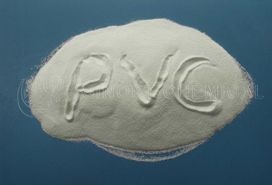What is Sodium Tripolyphosphate?
Author: yisainuo Time: 2017/10/31Sodium tripolyphosphate (STPP) is a chemical that has many uses in industry, ranging from an ingredient in cleaning products to a food preservative. Also known by alternate names like pentasodium salt or triphosphoric acid, the substance falls into the classification Generally Regarded As Safe (GRAS), which means that past use of the chemical has presented no risk to health. It can also be found in some paints and ceramic products, among other uses.
Chemistry
Structurally, STPP is made up of five sodium atoms, three phosphorous atoms, and ten oxygen atoms stuck together. It is commonly made by mixing monosodium phosphate and disodium phosphate to produce a white crystalline powder that has no smell and easily dissolves in water. These useful characteristics make it suitable for a variety of uses.
Cleaning Power
One of the common usages of STPP is as an ingredient in detergents and soaps. Most gel, liquid, tablet, and powder forms of both laundry and dishwasher detergent contain it. Its key function is that it allows surfactants, which are molecules that help dissolve surface dirt, to work at their full potential. The chemical can also soften hard water for easier foaming and cleaning, and it helps prevent dirt from sticking to the surfaces of the object being cleaned. Many general household cleaning products, including surface and toilet cleaners, contain STPP.
Food Applications
Sodium tripolyphosphate is also used to preserve foods such as red meats, poultry, and seafood, helping them to retain their tenderness and moisture during storage and transport. Pet food and animal feed can also be treated with it, serving the same general purpose as it does in human food. STPP also has been used to help preserve the quality of drinks such as milk and fruit juices.
Because sodium tripolyphosphate can improve the appearance of seafood like shrimp and scallops, there is some concern that unscrupulous salespeople may sell products that are not fresh to consumers who cannot see the signs that the items have started to go bad. Although it cannot be used specifically for this purpose, this chemical also holds in water, making the seafood heavier and therefore more expensive. Some food quality experts recommend asking a fishmonger or other salesperson for seafood that has not been treated with this chemical. Some stores will mark products that have not been exposed to STPP as "dry."
Other Uses
STPP's chemical characteristics are used in paint to keep the pigments evenly dispersed, and in ceramics to evenly distribute clay. Paper mills use it as an oil-resistant agent when coating paper, and it may also be used as a tanning agent for leather. Due to its cleaning action, it may also be an ingredient in toothpaste.
Prev Article:What is SLES?
Next Article:What is Caustic Soda used for?
(1).png)

.jpg)
.jpg)
.jpg)
(1).jpg)
.jpg)
.jpg)
.jpg)
(2).jpg)

